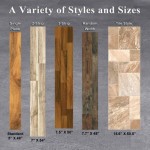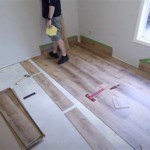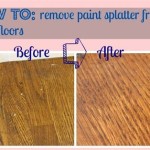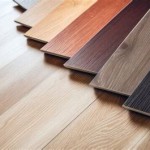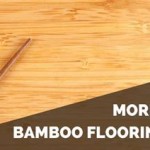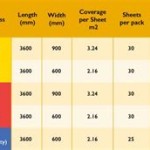Vinyl vs Laminate Flooring: A Detailed Comparison
Choosing the right flooring for your home can be a daunting task, given the vast array of options available. Two popular choices, vinyl and laminate flooring, often leave homeowners wondering which one is better suited for their needs. While both offer attractive aesthetics and durability, they possess distinct characteristics that set them apart. This article delves into the differences between vinyl and laminate flooring, providing a comprehensive comparison to aid in making an informed decision.
Material and Construction
The core difference between vinyl and laminate lies in their construction materials. Vinyl flooring is made from polyvinyl chloride (PVC), a synthetic material known for its flexibility and water resistance. It can be manufactured in various forms, including luxury vinyl tile (LVT) and luxury vinyl plank (LVP), which mimic the look of natural materials like wood, stone, and tile. These materials are typically composed of multiple layers, including a wear layer for durability, a core layer for strength, and a backing layer for stability.
Laminate flooring, on the other hand, is constructed from a core layer of high-density fiberboard (HDF) or medium-density fiberboard (MDF), overlaid with a decorative layer that replicates the appearance of wood, stone, or other materials. This decorative layer is then coated with a clear protective layer, typically made of melamine resin, to enhance durability and resist scratches.
Durability and Water Resistance
Durability is crucial when it comes to flooring, especially in high-traffic areas. Vinyl flooring excels in this regard due to its inherent flexibility and resilience. The top wear layer of vinyl is typically made from a clear, protective coating that can withstand scratches, dents, and stains. Moreover, vinyl is generally more water-resistant, making it an excellent choice for kitchens, bathrooms, and basements.
Laminate flooring, while durable, is not as resistant to water damage as vinyl. The HDF or MDF core layer absorbs moisture, which can lead to warping or swelling if exposed to prolonged water contact. While some laminate floors have a moisture-resistant core, they are not completely waterproof. For areas prone to spills or moisture, vinyl flooring offers superior protection.
Installation and Maintenance
Both vinyl and laminate flooring are relatively easy to install, making them DIY-friendly options. Vinyl flooring can be installed using a floating method or with adhesive. Floating installation involves interlocking planks or tiles, while adhesive installation requires attaching the flooring to the subfloor with adhesive. Laminate flooring is also typically installed using a floating method, with interlocking planks that click together. However, both require a level subfloor for proper installation.
Maintenance is straightforward for both vinyl and laminate flooring. Regular sweeping or vacuuming is sufficient to remove dirt and debris. You can also use a damp mop to clean spills and dirt. Avoid using harsh chemicals or abrasive cleaners that can damage the flooring surface.
Cost and Aesthetics
Cost is often a significant factor in flooring decisions. Vinyl flooring generally falls in the mid-range price spectrum, with LVT and LVP options being more expensive than standard vinyl tiles. Laminate flooring can be more affordable, especially at lower grade levels. However, high-quality laminate can rival the cost of premium vinyl.
Aesthetically, both vinyl and laminate offer diverse options. Vinyl flooring can realistically replicate various natural materials, including wood, stone, and tile, with intricate textures and colors. Laminate flooring also boasts a wide range of designs, often featuring realistic wood grain patterns and a variety of colors. Ultimately, the aesthetic choice depends on your personal preferences and the overall style of your home.
Key Points to Consider:
Installation:
Vinyl flooring can be installed using a floating method or with adhesive, while laminate flooring is typically installed using a floating method. Both require a level subfloor for proper installation.
Durability and Water Resistance:
Vinyl is more durable and water-resistant than laminate. It is an excellent choice for kitchens, bathrooms, and basements.
Cost and Aesthetics:
Vinyl flooring generally falls in the mid-range price spectrum, while laminate flooring can be more affordable. Both offer diverse aesthetic options mimicking natural materials.
The decision between vinyl and laminate flooring depends on your individual needs and preferences. Consider the factors discussed above, including durability, water resistance, installation, maintenance, and cost, to choose the best flooring option for your home.

Vinyl Flooring Vs Laminated Which Is The Better Choice Lamiwood Designer Floors

What S The Difference Between Vinyl And Laminate Flooring Igloo Surfaces

Laminate Vinyl Flooring In Portland Or

Vinyl Vs Laminate Flooring Which One Should You Use Easiklip Floors

This Or That Laminate Vs Vinyl Ben Laube Homes

Luxury Vinyl Plank Vs Laminate What S The Difference

Vinyl Plank Vs Laminate Flooring Which Is Right For You Onflooring

Vinyl Vs Laminate Linoleum Which Is The Best Flooring Wood And Beyond Blog

Laminate Vs Vinyl The Home

Vinyl Vs Laminate Flooring What S The Difference
See Also
